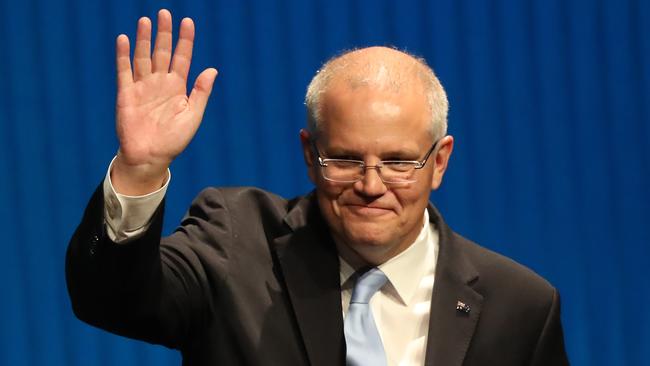PM betting the house on $500m first-home plan
The Prime Minister has launched a $500m plan to help first-home buyers.

Scott Morrison has unveiled a $500 million housing affordability plan in a pre-election assault on Labor’s negative gearing and housing policies, pledging to underwrite home loan deposits for first-home buyers struggling to hit a 20 per cent target imposed by the banks.
Under pressure to match the Coalition pitch to younger voters, Bill Shorten yesterday agreed to support the first-home deposit scheme, which was backed by the Property Council of Australia and Master Builders Australia.
The First Home Loan Deposit Scheme will be available from the start of next year to first-home buyers who earn up to $125,000 — or $200,000 for couples — who have amassed a 5 per cent deposit.
The Prime Minister’s proposal would fill the loan gap usually funded through private lenders’ mortgage insurance, which protects the bank from a defaulting customer who has a small deposit.
The government pledge could significantly impact the lenders’ insurance market currently dominated by the local arm of US giant Genworth Mortgage Insurance and QBE, which rely on banks requiring low-deposit customers to take out policies to gain a home loan. Under the plan, the government would pay for the shortfall on home loans for first-home buyers and remove the costs of paying lenders mortgage insurance.
“We want to help make the dreams of first-home buyers a reality,” Mr Morrison said. “With the banks pulling back and larger deposits of 20 per cent now being standard, it is not getting easier.”
Australian Banking Sector chief executive Anna Bligh said she looked forward to seeing more detail on the housing plan, modelled on a similar policy in New Zealand and which is expected to slash in half the time taken to save for a deposit.
The big banks declined to comment on the proposal, while Genworth was rushing to analyse the plan yesterday before commenting.
Mortgage insurers already face revenue headwinds as banks increase lending standards and demand borrowers stump up larger deposits, making insurance increasingly unnecessary.
According to the Productivity Commission’s recent report on competition in the financial system, one-quarter of all owner-occupier loans were sold with lenders’ mortgage insurance, allowing the industry to capture a significant amount of revenue from first-home buyers.
Master Builders Australia chief executive Denita Wawn, who has been heavily critical of Labor’s negative gearing reforms, said the plan was “a big win for aspiring first-home buyers and the building industry”.
Property Council chief executive Ken Morrison called Mr Morrison’s plan a “smart proposal” that could spur activity in the construction sector, which has been shedding jobs amid the housing downturn over the past year.
“This isn’t a hand-out but a hand-up for first-home buyers,” Mr Morrison said.
Opposition treasury spokesman Chris Bowen called the plan a “desperate” attempt to try to relate to Australians struggling to get into the housing market, but confirmed Labor would adopt the plan. Mr Shorten yesterday claimed his negative gearing “won’t have the impact on house prices” the Coalition is claiming, amid concern from the RBA and Treasury that the house price slide is dampening consumer spending and threatening the economy.



To join the conversation, please log in. Don't have an account? Register
Join the conversation, you are commenting as Logout